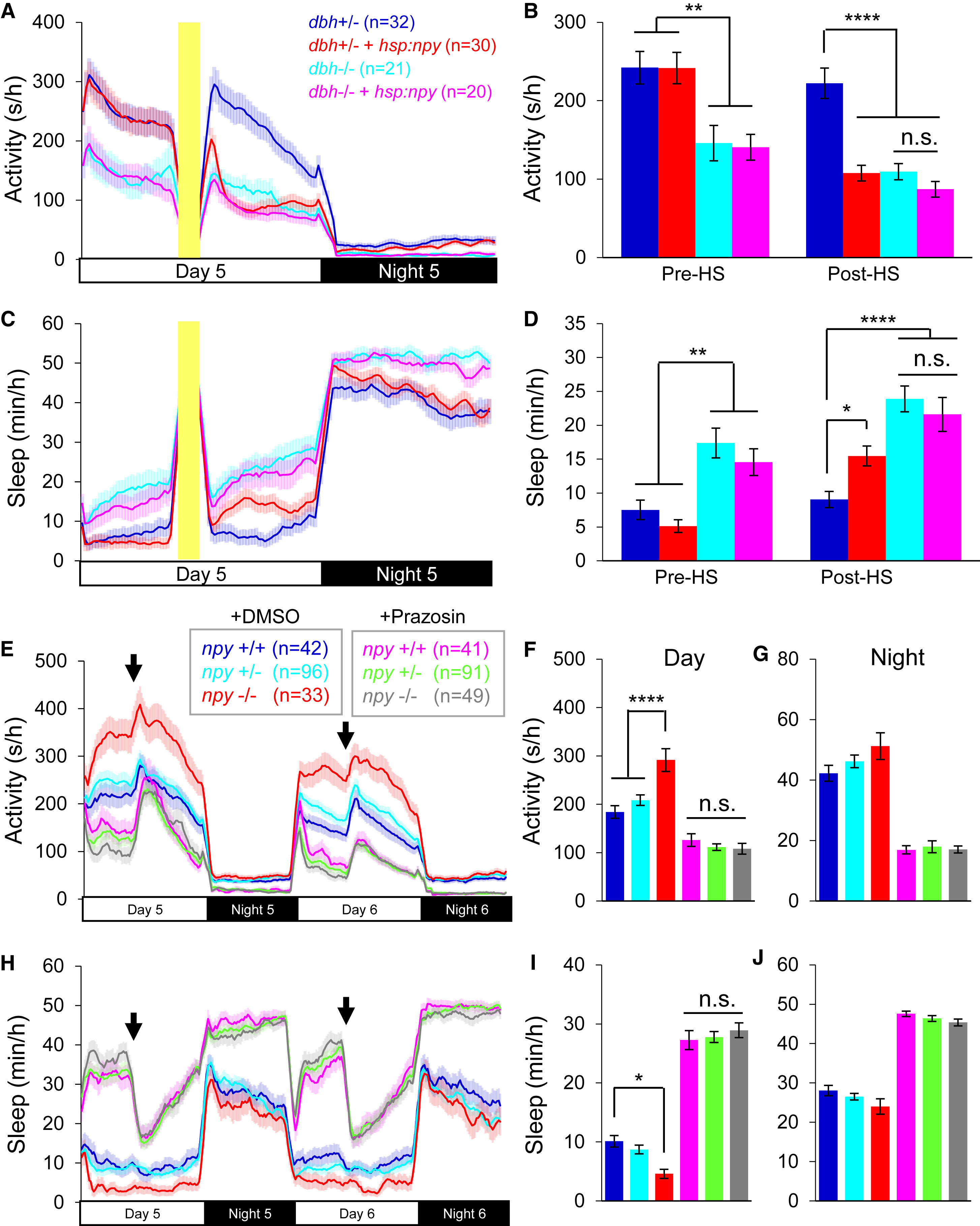Fig. 6 Functional Evidence that NPY Promotes Sleep by Inhibiting NE Signaling (A–D) Tg(hsp:npy);dbh−/− and dbh−/− animals were less active (A and B) and slept more (C and D) than dbh+/− siblings during the day before and after HS. Tg(hsp:npy);dbh+/− animals were less active and slept more than dbh+/− siblings during the day after HS. NPY overexpression in Tg(hsp:npy);dbh−/− animals did not further decrease locomotor activity or increase sleep compared to dbh−/− siblings. Yellow bars indicate HS. Pre-HS and post-HS quantify data on day 5 before and after HS. (E–J) npy+/+, npy+/−, and npy−/− siblings were treated with either DMSO or prazosin. DMSO-treated npy−/− animals were more active (E and F) and slept less (H and I) than their DMSO-treated npy+/− and npy+/+ siblings during the day, but there was no difference at night (E, G, H and J). Prazosin decreased activity (E and F) and increased sleep (H and I) to a similar extent for npy−/−, npy+/−, and npy+/+ siblings during the day. Arrows indicate behavioral artifacts due to addition of water. Mean ± SEM for 2 (A–D) or 4 (E–J) experiments is shown. n.s., not significant; ∗p < 0.05; ∗∗p < 0.01; ∗∗∗∗p < 0.0001 by two-way ANOVA with Holm-Sidak test. See also Figures S6 and S7 and Table S2.
Image
Figure Caption
Figure Data
Acknowledgments
This image is the copyrighted work of the attributed author or publisher, and
ZFIN has permission only to display this image to its users.
Additional permissions should be obtained from the applicable author or publisher of the image.
Full text @ Curr. Biol.

